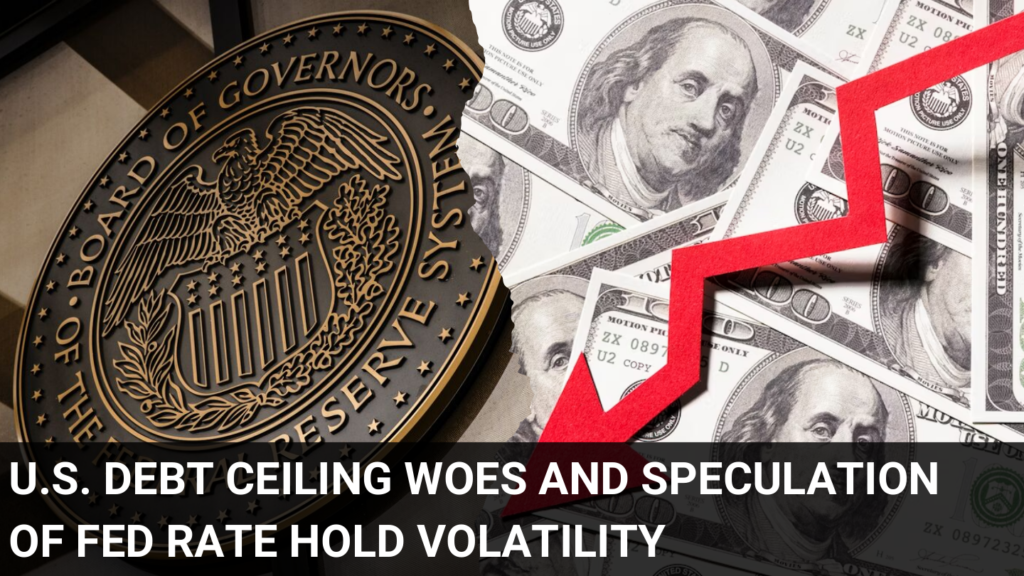
Last week, the market reacted positively after news that Democratic President Joe Biden and top congressional Republican Kevin McCarthy reached a tentative deal to raise the debt ceiling on U.S. government borrowing and avert a default that threatened to send shockwaves through the global economy.
U.S. dollar posted its third-week gain and settled with a gain of 1.00% as another round of favourable economic data further pared back bets on easing by the Federal Reserve.
The dollar index, a measure of the greenback’s value against six major currencies, touched a new seven-week high of 104.419 and settled at 104.226 with a weekly gain of 1.0%.
Bullions extended their losses for a second consecutive week. Gold prices retreated from the weekly high of 60430 and settled at 59353. Silver prices settled at 71229, down 2.85%.
Base metals found some ground. After hitting a weekly low of 692.95, Copper prices settled at 712.45, with a loss of 1.62%. Zinc prices recovered from their January 2021 low of 204.15, and settled at 211.45, down 6.13%.
Crude prices gained 2.07% last week and settled at 6004. Natural gas rebounded from the low of 186.30 and settled at 199.30.
The market responded favourably last week to reports that Democratic President Joe Biden and top congressional Republican Kevin McCarthy had reached a tentative agreement to lift the debt ceiling for the United States government and avoid a default that threatened to have a negative ripple effect on the world economy.
U.S. dollar posted its third-week gain and settled with a gain of 1.00% as another round of favourable economic data further pared back bets on easing by the Federal Reserve.
The dollar index, a measure of the greenback’s value against six major currencies, touched a new seven-week high of 104.419 and settled at 104.226 with a weekly gain of 1.0%.
Bullions extended their losses for a second consecutive week. Gold prices retreated from the weekly high of 60430 and settled at 59353. Silver prices settled at 71229, down 2.85%.
Base metals found some ground. After hitting a weekly low of 692.95, Copper prices settled at 712.45, with a loss of 1.62%. Zinc prices recovered from their January 2021 low of 204.15, and settled at 211.45, down 6.13%.
Crude prices gained 2.07% last week and settled at 6004. Natural gas rebounded from the low of 186.30 and settled at 199.30.
Important Economic Data and Events
This week’s main focus will remain on Federal Reserve policy speculation. Further, jitters about the Debt ceiling deal may hold clutter during the week. Before the country runs out of money to pay its bills, which the Treasury said will happen by June 5, the accord still has a challenging path to pass through the sharply divided Congress.
The long standoff on raising the debt ceiling has spooked financial markets, weighing on equities and forcing the United States to pay record-high interest rates in some bond sales. But, for the most part, investors had been expecting Washington to reach a deal, meaning a sustained rally in stock markets may be unlikely.
China Numbers
On Wednesday, China will publish its official PMI statistics. The next day, the Caixin manufacturing PMI for the private sector will be released. The contraction in the manufacturing sector is foreseen to moderate slightly while the rate of expansion in the stronger service sector is expected to slow.
The number will have a significant impact on base metal prices.
U.S Non-Farm Employment Change
Non-Farm Employment Change will have a significant impact on the market. A significant number would fuel expectations for another rate hike in June. Data is set to release on Friday. The jobs report will be one of the last pieces of data before the Fed’s June meeting.
Along with them, Unemployment Claims and some Fed officials’ speeches will have to be watched closely during the week.
Eurozone inflation
The Eurozone is to release flash consumer price inflation data for May on Thursday which is expected to underline that the European Central Bank still has a long way to go in its battle to curb price pressures.
In the last week, data showed that Germany, the bloc’s largest economy, entered a recession in the first quarter as high inflation hit consumer spending. All the above data and events will hold volatility in the dollar and Euro.
